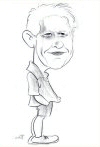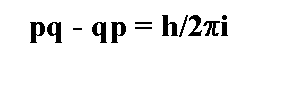

Event Enhanced Quantum Physics (EEQT)
Links to my other online papers dealing with hyperdimensional physics
MAX BORN
 *Max BORN (b. Dec. 11,
1882, Breslau, now Wroclaw
in Poland; d. Jan. 5, 1970, Göttingen, Germany) German-British physicist.
Born was the son of an embryologist, a professor of anatomy at the University
of Breslau.
*Max BORN (b. Dec. 11,
1882, Breslau, now Wroclaw
in Poland; d. Jan. 5, 1970, Göttingen, Germany) German-British physicist.
Born was the son of an embryologist, a professor of anatomy at the University
of Breslau.
He was educated at the universities of Breslau, Heidelberg, Zurich and Göttingen, where he obtained his PhD in 1907.
From 1909 until 1933 he taught at Göttingen, being appointed professor of physics in 1921. With the rise of Hitler he moved to Britain, and from 1936 served as professor of natural philosophy at the University of Edinburgh and became British subject in 1939. He returned to Germany on his retirement in 1953.
Born`s early work was on crystals, particularly the vibrations of atoms in crystal lattices. The Born-Haber cycle is a theoretical cycle of reactions and changes by which it is possible to calculate the lattice energy of ionic crystals.
He is noted for his role in the development of the new quantum theory. Together with Pasqual Jordan, he developed (1925) the matrix mechanics introduced by Werner Heisenberg. (q.v.). He also showed how to interpret the theoretical results of Louis de Broglie and the experiments of such people as Clinton J. Davisson, which showed that particles have wavelike behavior. At the time, it was known that in some circumstances light, electrons, etc., behaved as waves whereas in others they acted like particles. (Wiliam Bragg once suggested using the corpuscular (particle) theory on Monday, Wednesday, and Friday, and the undulatory (wave) theory on Thuesday, Thursday, and Saturday.) Mathematical treatments could be used to predict behavior, but there was a problem in finding some accepted physical picture of how electrons, for instance, could act in this way.
Erwin Schrödinger, who developed wave mechanics, interpreted particles as ``wave packets", but this was unsatisfacory because such packets would dissipate in time. Born`s interpretation was that the particles exist but are "guided" by a wave. At any point, the amplitude (actually the square of the amplitude) indicates the probability of finding a particle there. An essential part of this idea of electrons, atoms, etc., is that it depends on probability - there is no predetermined way in which absolute predictions can be made, as in classical physics. A similar result is embodied in the uncertainty principle of Werner Heisenberg. Einstein, amongst others, could never eccept this and Born corresponded with him on the subject (the Born-Einstein letters were published in 1971).
Born shared (with Walter Bothe) the 1954 Nobel Prize for physics. He is buried in Göttingen, where his tombstone displays his fundamental equation of matrix mechanics:
LIST OF MAX BORN SYMPOSIA
Wroclaw, 24--27 September 1997 -- X-th SymposiumQuantum Future
Director: A. JadczykKarpacz, 24--28 September 1996 -- IX-th Symposium
New Symmetries in the Fundamental Interactions Theories
Director: Z. Hasiewicz, J. Lukierski, Z. Popowicz, M. MozrzymasKarpacz, 13--15 October 1995 -- VII-th Symposium
Critical Phenomena in Strongly Interacting Matter
Director: K. Redlich, L. Turko (unpublished)Kudowa, 21--24 September 1995 -- VI-th Symposium
The Nature of Crystalline States
Director: J. Jedrzejewski Special issue of Physica A ElsevierKudowa, 1--4 June 1994 -- V-th Symposium
Diffusion Processes: Experiment, Theory, Simulations
Director: A. Pekalski Lecture Notes in Physics, Eds. A.Pekalski, Vol. 438 (1994) pp. 312, Springer--VerlagKarpacz, 28--30 September 1993 -- IV-th Symposium
Solid State Physics I
Director: Z.M. Galasiewicz (unpublished)Sobotka Castle, 15--17 September 1993 -- III-rd Symposium
Stochasticity and Quantum Chaos
Director: Z. Haba, Eds. Z. Haba, W. Cegla, L. Jakobczyk Mathematics and Its Applications, Vol. 317 (1995) pp. 226, Kluwer Academic PublishersSobotka Castle, 24--27 September 1992 -- II-nd Symposium
Spinors, Twistors, Clifford Algebras and Quantum Deformations
Director: Z. Oziewicz, Eds. Z. Oziewicz, B. Jancewicz and A. Borowiec Fundamental Theories of Physics, Vol. 52 (1993) pp. 430, Kluwer Academic PublishersWojnowice Castle, 27--29 September 1991 -- I-st Symposium
Quantum Group and Related Topics
Director: J. Lukierski, Eds. R. Gielerak J. Lukierski and Z. Popowicz Mathematical Physics Studies, Vol. 13 (1992) pp. 276, Kluwer Academic Publishers
Last modified on: July 13, 2004.
Last modified on: June 27, 2005.
.
